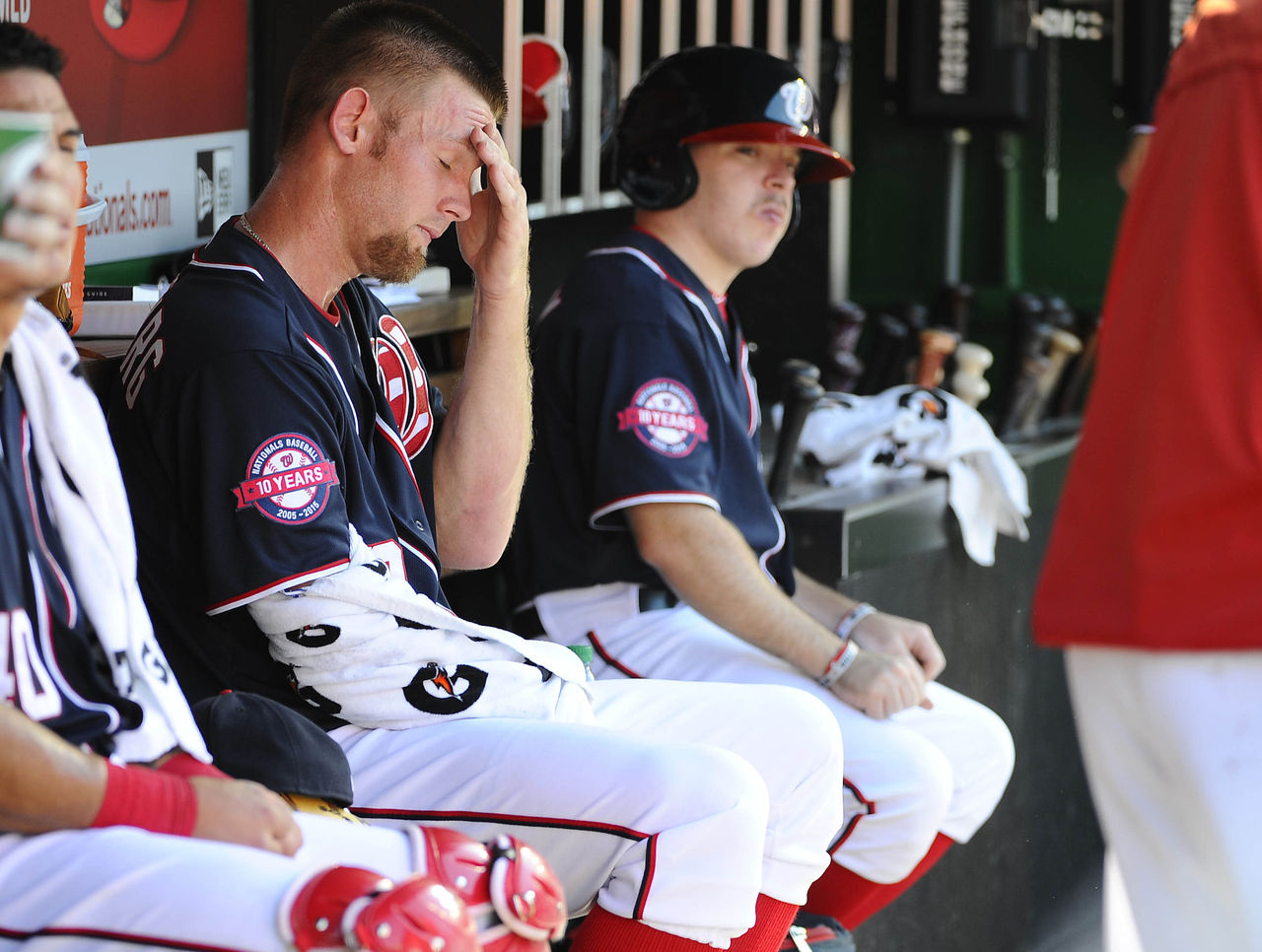How to handle workload limits in fantasy baseball
Follow theScore's fantasy feed on Twitter (@theScoreFantasy) for the latest news, features and more.
There are two types of players that often face workload limits. The first group are players returning the season after a significant injury. Former All-Star SP Lance Lynn and RP Greg Holland missed the entire 2016 season after suffering major injuries in 2015. When they do play in 2017, expect their usage to be carefully monitored to rebuild arm strength and avoid re-injury.
The second group of reduced-workload candidates have more upside. They include young pitchers, many of them rookies, who are slowly getting stretched out from minor league or bullpen roles into 200-innings-per-season workhorses. For fantasy purposes, these are the players that represent more value.
Types of workload management
Teams will manage a young pitcher's workload by:
- Delaying season debuts
- Instituting a per-game pitch count
- Skipping a pitcher's turn in the rotation
- Shifting a starter into a relief role
- Shutting down a pitcher once he hits his innings limit
Teams manipulate their young pitchers' service time at the major league level to slow down salary accelerators like super two status. Stashing a potential mid-summer call-up in a prospect slot or at the end of your fantasy bench could yield big dividends. It also carries the added bonus of back-loading the fantasy production to the end of the season, just in time for the fantasy playoffs.
Per-game pitch counts can be trickier than an outright innings limit. Pitchers with good command can still work deep enough to register solid fantasy lines, but if a pitcher struggles, his day might be over before he's pitched deep enough to qualify for a win (five innings) or quality start (six innings). For a wild pitcher, even a 100-pitch cap might not get them past the fourth inning.
Those situations are relatively easy to navigate. Others are not.

Best-Case Scenario: The 2016 Blue Jays
The 2016 Toronto Blue Jays serve as the most recent case study with their handling of SP Aaron Sanchez. After pitching most of his 102 innings in 2015 as a reliever, the Jays declared their intention to move Sanchez into the rotation - but cap his innings to avoid injury.
A team with limited postseason potential might have allowed Sanchez to pitch all of his innings as a starter, then shut him down mid-season. Rather than lose a contributor of Sanchez's magnitude in a pennant race, the Jays intended to compromise by shifting him back to a bullpen role, conserving his innings in the process.
A move to the bullpen usually spells the end of fantasy relevance. Sanchez wouldn't be in line for high-leverage situations, so wouldn't be a source of saves, erasing his value in standard 5x5 category leagues.
Luckily for his owners, Sanchez stayed in the rotation for the entirety of 2016. His turn in the rotation was skipped on occasion to make sure he still had enough gas left for a potential playoff run. His owners were rewarded with 192 innings of 3.00 ERA baseball, including crucial September appearances that aided both the Jays and his fantasy backers alike.
But Sanchez was the exception to the rule. Under similar circumstances, another team wasn't so lucky.

A Cautionary Tale: The 2012 Nationals
The early shutdown is a killer in fantasy. Just look at what happened when the Washington Nationals shut down Stephen Strasburg in 2012: after an All-Star campaign, the team elected to pull Strasburg in early September, causing many of his fantasy backers to lose a crucial contributor for their own playoff run.
No matter how good a pitcher is, it's usually better to sell high well ahead of a workload reduction before it comes into effect. While losing productive outings, the upshot of trading away an innings-capped pitcher is getting a piece that can help you long-term. A young stud can get you to the playoffs, but that might be as far as you go after he's shut down.
Your standings in the league table play a big role in your approach. If you've built a big lead and are trending towards a playoff berth, there will be more value in trading a reduced-workload player for one who can help in the playoffs, even if it's a downgrade in per-game fantasy production.
On the other hand, if you're sitting two or three seeds out of the playoffs and need to make up ground fast, trading for a player like Sanchez can get you closer to a postseason appearance. And when a team makes it known that an innings limit will come into play, that usually means the player in question will come at a discount, both in trade talks and on draft day.
Always remember that you're not trading away a player's past performance - those outings are already in the books. What you're selling is whatever the pitcher does for the rest of season. Pitchers are a big unknown in any case - that's why so few are selected toward the top of your fantasy draft - so when given an explicit warning about workload management, it's best to divest.
HEADLINES
- Rams' Adams inactive for TNF vs. Seahawks due to hamstring injury
- QB carousel: An early look at the offseason market
- Report: Jaguars signing Meyers to 3-year, $60M extension
- Ex-Rockies exec: Bryant bothered by inability to stay healthy
- Giannis denies speaking with Bucks about future: 'I'm still locked in'